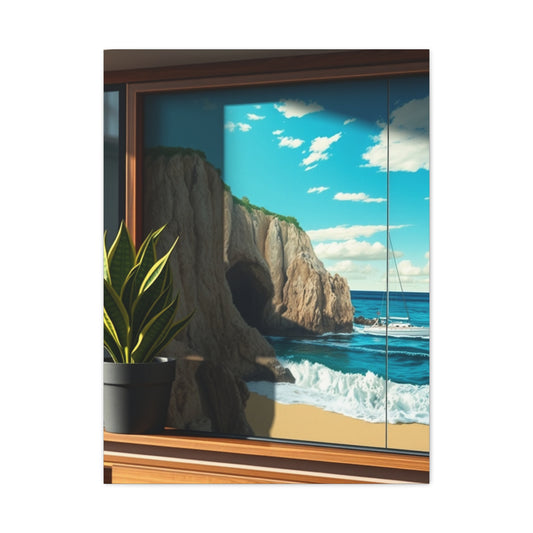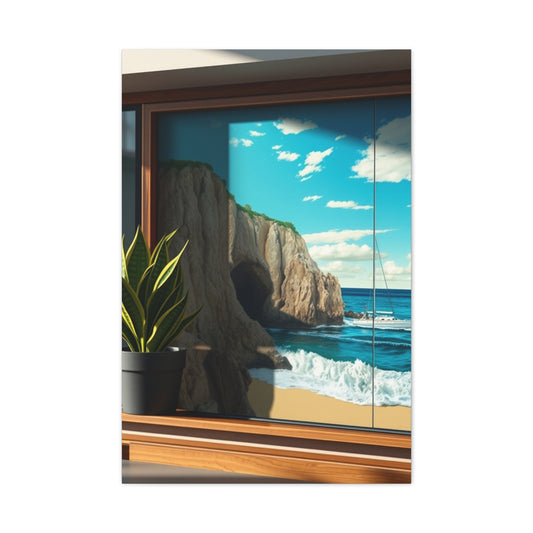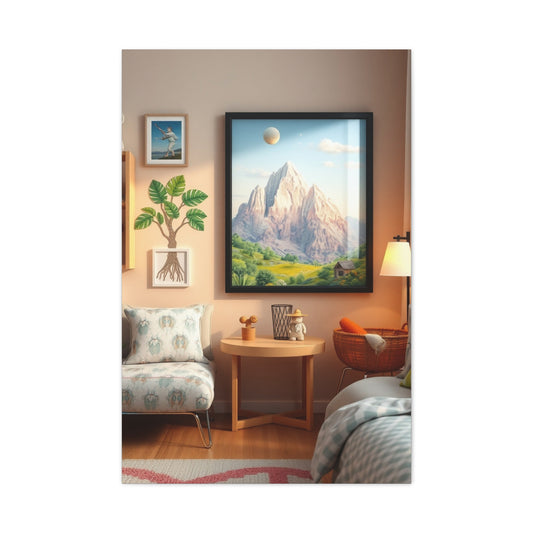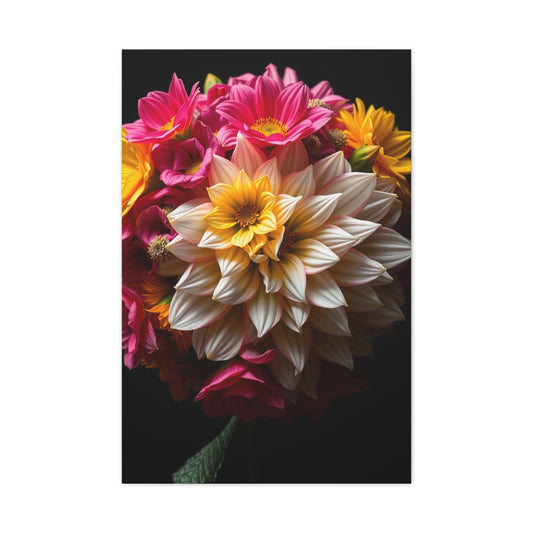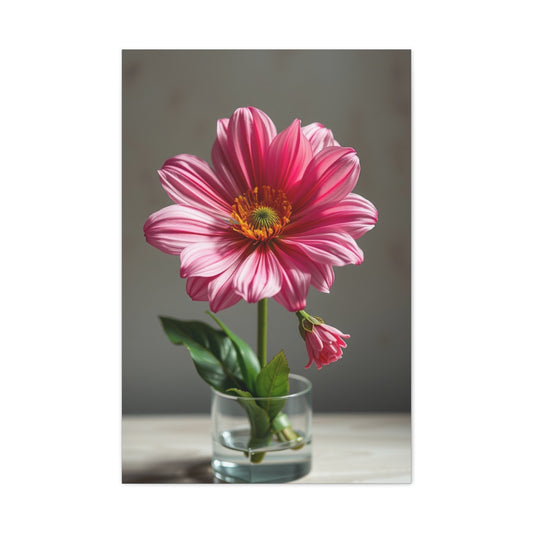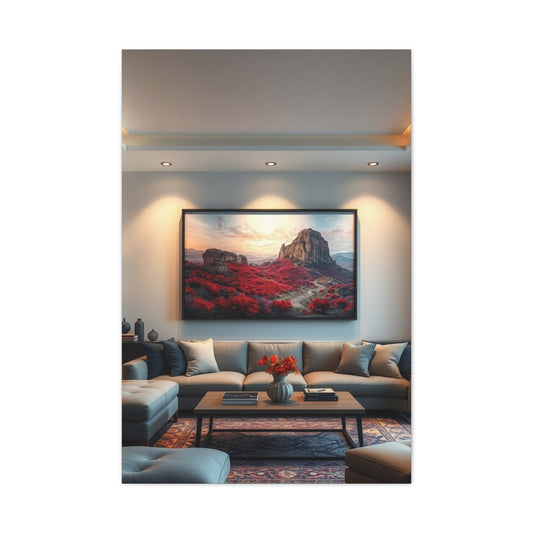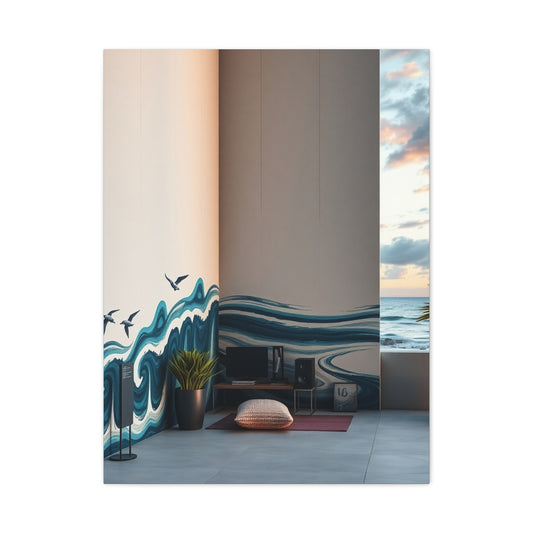Robert Dutton’s Artistic Journey: Exploring Spontaneity and Precision
Robert Dutton stands as a prominent figure in the realm of contemporary mixed media fine art, having spent over three decades honing his craft. Known for his deeply evocative landscapes, Dutton’s work captures the fragile beauty of nature through an intricate blend of spontaneity and control. From his base in Leeds, a city teeming with creative energy, Dutton’s art speaks to a rich and multifaceted journey, one that is both a reflection of the natural world and a window into the inner workings of his mind.
Throughout his career, Dutton has become renowned for his ability to fuse unpredictability with precision, crafting pieces that seem to exist in a world between the real and the imagined. His landscapes are more than mere depictions of nature; they are immersive experiences, inviting the viewer to engage with both the external world and their internal emotions. This balance between organic, free-flowing elements and meticulously considered design is what gives Dutton's work its captivating quality.
At the heart of his creative process lies a masterful ability to control seemingly chaotic materials, transforming them into harmonious, expressive works. Dutton’s mixed media approach is a testament to his adaptability and deep understanding of various artistic techniques. Through his use of watercolors, charcoal, ink, and acrylics, he has cultivated a style that is visually rich and emotionally resonant. This fusion of different media allows him to create pieces with multiple layers of texture and depth, each layer contributing to the overall narrative of the artwork.
The Art of Contradictions: Fragility, Spontaneity, and Control
One of the most striking aspects of Robert Dutton’s landscapes is the interplay between fragility and strength. Each piece, whether it is a sweeping view of a natural landscape or an abstract interpretation of a moment in time, carries with it a profound sense of impermanence. The textures Dutton creates are dynamic, moving from hard to soft, from dark to light, and from sharp to blurred. These transitions within his works mirror the ever-changing nature of the world around us, capturing the delicate balance between the certainty of structure and the fleetingness of the moment.
His use of mixed media introduces an element of unpredictability to his art. Unlike many artists who carefully plan every step of the creative process, Dutton embraces the unexpected. He allows the materials to dictate the flow of the piece, welcoming the unforeseen as an integral part of the artwork’s evolution. This spontaneous approach is part of what makes his landscapes feel alive. The viewer is never quite sure where the piece is going next, but this uncertainty only adds to its allure. It is through this free-flowing process that Dutton can capture the raw, untamed essence of nature, while still adhering to the delicate balance of artistic control.
However, despite the organic feel of his work, Dutton’s process is far from chaotic. Each stroke of the brush, each layer of pigment, is carefully thought out, placed with purpose. The tension between spontaneity and control is central to the emotional depth of his landscapes. By creating a structure within the chaos, Dutton allows the viewer to experience both the beauty of unpredictability and the security of intentionality. His landscapes become a metaphor for life itself: a delicate dance between freedom and constraint, beauty and structure.
This ability to marry spontaneity with careful technique is what makes Dutton’s art so compelling. The sense of unpredictability in his works invites the viewer to experience the world through an entirely new lensone where chaos and order are not opposites but complementary forces that together create something much greater than the sum of their parts.
Landscapes Beyond the Physical: Emotion, Intuition, and Reflection
For Robert Dutton, landscapes are not simply representations of the world around us; they are deeply personal expressions of thought, emotion, and experience. His work invites viewers to consider not only the physical world but also the emotional landscapes that shape our lives. Through the use of mixed media, Dutton creates a dialogue between nature and human experience, offering a space where the viewer can connect with both the art and the artist on a visceral level.
Dutton’s art offers more than just a visual experience is an invitation to reflect on the way we interact with our environment and with ourselves. His use of mixed media allows him to explore a wide range of textures and visual elements, which in turn gives each piece a unique voice. The colors he chooses, the textures he employs, and the layers he builds up all contribute to an overall atmosphere that speaks to the emotional resonance of the landscape.
There is a deliberate contrast between the ephemeral nature of Dutton’s materials and the timeless beauty of his subjects. His works are at once fleeting and permanent, capturing the paradox of nature’s fragility. The deliberate yet spontaneous way he builds up each piece creates a layered experience, inviting viewers to linger and contemplate the many facets of the artwork. This layering technique allows the viewer to see something new each time they encounter the piece, providing an ongoing dialogue between the art, the artist, and the audience.
Moreover, Dutton’s art challenges the traditional notions of space and place. Rather than adhering strictly to the idea of a landscape as a static, fixed representation of nature, his works evoke a sense of constant change. The fluidity of his mixed media techniques echoes the dynamic, ever-shifting nature of the world itself. In doing so, Dutton’s landscapes do not merely depict nature; they embody its transient qualities, encouraging viewers to reflect on their relationships with the world around them.
Dutton’s ability to communicate a deep emotional connection to nature through his work speaks to his understanding of both the physical and emotional landscapes we navigate in our daily lives. His landscapes are not only visual depictions but are also profound emotional landscapes that speak to the complexity of the human condition. Whether his work evokes a sense of nostalgia, joy, or melancholy, it consistently encourages reflection on the fragile beauty of life.
Through his art, Robert Dutton has created a space where the viewer can engage with nature in a way that transcends mere observation. By merging the natural world with his own experience, he has crafted landscapes that speak to the heart as much as they do to the eye. The delicate interplay between intuition and technique, spontaneity and control, creates works that are rich in meaning and full of emotional depth. It is this unique combination of artistry and insight that has made Dutton’s work so compelling, drawing audiences into a world where the boundaries between the self and the environment blur, leaving behind a deep sense of connection and understanding.
In exploring Robert Dutton’s work, it becomes clear that his landscapes are not just representations of nature, but deeply personal explorations of the artist’s relationship with the world. Through his mastery of mixed media, he invites us into a space of contemplation, where we are challenged to reconsider our connections to the natural environment and the fleeting moments of beauty that surround us.
The Art of Robert Dutton: Exploring His Mixed Media Landscape Technique
Robert Dutton’s mixed media landscapes offer more than just a visual representation of the natural world; they serve as an invitation to experience the landscape in a way that goes beyond sight. His artwork is a dynamic interplay of colors, textures, and materials, carefully layered to evoke a vivid sensory experience. A deeper dive into his technique reveals not only his technical mastery but also the profound connection he shares with the landscapes he portrays. Dutton’s work stands out for its ability to combine the unpredictable nature of materials with a controlled creative process, blending spontaneity and intention to craft landscapes that are rich in depth and emotion.
Mixed media, as an artistic approach, allows Dutton to break free from the constraints of using a single medium. This freedom becomes evident when you explore his use of watercolor, acrylics, ink, and charcoal. Each of these materials has its own unique set of properties that Dutton manipulates to produce different effects, contributing to the overall sense of movement and life in his works. Watercolor, known for its fluidity and transparency, provides a soft, atmospheric background, while acrylics, with their thick consistency, offer structure and texture. Ink allows for precise detailing, and charcoal brings in the raw, earthy feel of the natural world, adding depth and contrast. The combination of these materials allows Dutton to explore every aspect of the landscape, from the rough texture of a rocky cliffside to the delicate nuances of light as it shifts across a forest.
The Layers of Life: Dutton’s Masterful Use of Layering
One of the most captivating elements of Dutton’s mixed media technique is his use of layering. Each of his works is built up gradually, with multiple layers of paint, ink, and charcoal being applied, manipulated, and allowed to interact in often surprising ways. This method of layering not only contributes to the depth of his pieces but also mirrors the layering of time and seasons in the natural world. The process begins with a wash of watercolor to establish a light and airy atmosphere, setting the stage for what is to come. Dutton then adds bold strokes of acrylic paint to provide contrast and structure, carefully shaping the composition to guide the viewer’s eye through the piece. Charcoal is often employed at various stages to deepen shadows, add texture, and give the artwork a sense of movement and energy.
Each mark and stroke in Dutton’s work, though seemingly spontaneous, is underpinned by a deliberate structure. While the artist embraces the unpredictable nature of the materials, there is a clear vision in his mind guiding each decision. It is this delicate balance between intention and chance that gives his landscapes a sense of organic harmony. Even as the materials shift and change in ways that Dutton cannot always anticipate, he remains attuned to the evolving narrative of the piece. This interplay of control and freedom allows for an authentic representation of nature, one that feels alive and ever-changing, just like the landscapes it seeks to capture.
The process of layering also invites the viewer to explore the piece more deeply, as each layer reveals a new dimension or element of the landscape. What might initially appear as a simple, tranquil scene may, upon closer inspection, reveal the complexities of light, texture, and color that Dutton has built up through his layers. This technique not only creates a visual richness but also enhances the emotional resonance of the work, making it an experience that evolves as the viewer spends more time with it.
A Sensory Landscape: Texture, Color, and Emotional Resonance
In addition to the interplay of materials and the intricate layering process, Dutton’s landscapes are characterized by their profound sensory quality. His use of texture plays a critical role in creating a tactile sense of the landscape. The rough, jagged lines made by charcoal suggest the sharp edges of rocks, while the soft, flowing washes of watercolor evoke the gentle breeze that moves through the leaves. These textures serve to heighten the viewer’s experience, drawing them into the scene, not just as a passive observer but as someone who feels the landscape on a visceral level.
The tactile nature of his work extends beyond just texture. Dutton’s skillful manipulation of color is another defining feature of his technique. His landscapes often feature subtle gradients of color, where one hue gently blends into another, evoking the shifting light of dawn, the deepening shadows of dusk, or the dramatic transitions that occur during storms. This careful control of color allows Dutton to craft an atmosphere that goes beyond mere representation. Rather than simply capturing a landscape as it appears, he uses color to convey the emotions and moods associated with that scene. For instance, soft blues and greens might evoke a sense of calm and serenity, while fiery oranges and reds can create an intense, almost tumultuous feeling. Through color, Dutton can guide the emotional response of the viewer, transporting them into the very heart of the landscape.
Dutton’s understanding of the natural world is key to his ability to evoke such powerful emotions through his use of color and texture. His landscapes are not just depictions of nature; they are an expression of his intimate connection to the environment. Dutton’s careful observation and experiences with the world around him allow him to capture the essence of a place, not just how it looks, but how it feels. Whether it’s the sense of awe inspired by a towering mountain range or the quiet solitude of a misty forest, Dutton’s landscapes communicate a deep reverence for the earth.
Moreover, the emotional impact of Dutton’s work extends beyond color and texture; it’s also tied to the overall composition of his pieces. The careful arrangement of elements within the artwork creates a sense of balance and harmony, allowing the viewer to experience the landscape holistically. The sweeping lines of a distant horizon, the rising mist over a valley, or the stark contrast between a sunlit sky and shadowed terrainall these compositional choices contribute to the narrative of the landscape. As a result, Dutton’s work is not just a visual representation; it is a full sensory immersion, allowing the viewer to feel as though they are physically present in the landscape he has created.
Through his expert use of mixed media, Robert Dutton has mastered the art of creating landscapes that are both visually stunning and emotionally resonant. His work invites the viewer to step into a world where nature is not just observed, but experienced. The layers of paint, ink, and charcoal combine to form a landscape that feels alive, shifting with the light, the seasons, and the mood of the moment. Dutton’s technique transcends the traditional boundaries of landscape painting, creating a multisensory experience that resonates with anyone who takes the time to engage with it. Each piece offers a unique journey, inviting viewers to connect with the natural world in a way that is personal, immersive, and profoundly moving.
The Emotional Depth in Robert Dutton’s Creative Process
While technique and skill are fundamental to Robert Dutton’s artistry, it is the deep emotional resonance embedded in his mixed-media landscapes that truly distinguishes his work. This segment delves into how emotion plays a pivotal role in Dutton’s artistic process, shaping the way he captures landscapes on canvas. Dutton’s art is not just about visually replicating the world he sees; it’s about translating his profound emotional responses to nature’s beauty, chaos, and complexity into his artwork. His creative journey is a personal one, where every landscape he creates becomes an exploration of his emotional connection to the natural world.
For Dutton, painting is an immersive experience in which emotions become intertwined with each brushstroke. Whether he’s feeling awe at the grandeur of a sprawling vista, serenity from a quiet, mist-covered meadow, or even melancholy from the overcast skies of a stormy day, these emotions find their way into his compositions. His work serves as an expression of his inner feelings, drawing a parallel between his emotional landscapes and the external natural world he encounters. By embedding his emotions into each piece, Dutton allows viewers to engage with the raw and vulnerable aspects of both the artist and the landscape.
This profound connection between nature and emotion is visible in every aspect of his work, especially in his use of color. Dutton does not rely on color solely to replicate nature as it appears to the eye; instead, he uses it as a tool to evoke specific feelings and moods. A delicate palette of pastel blues and soft greens might evoke tranquility and contemplation, while the striking contrast of deep reds and vibrant oranges can stir a sense of passion, intensity, or even tension. The way he selects and applies color transforms the canvas into a powerful emotional conduit, where the landscape’s aesthetic beauty is elevated into a deeper emotional experience. This intentional manipulation of color engages viewers on an emotional level, guiding them through the landscape Dutton has created not just with their eyes but with their feelings.
What sets Dutton apart is his ability to transcend the boundaries of traditional landscape painting, creating works that are both outwardly visual and inwardly psychological. His landscapes are not static representations of natural scenes; they become living, breathing reflections of the emotional ebb and flow that we all experience. The turbulence in a stormy sky or the calm of a dawn’s first light is not just captured visually is experienced through the emotional charge that Dutton imbues in the painting. Every stroke of the brush, every texture applied to the canvas, and every tonal shift is a deliberate choice designed to evoke emotion and provoke thought.
This emotional depth is not limited to just the immediate impression that his paintings convey. It often lingers in the minds of viewers, inviting them to reflect on their emotional connections to nature. Dutton’s work prompts contemplation about the human condition, our place within the natural world, and how the external environment mirrors our internal states. His landscapes are an invitation to pause, feel, and be moved by the quiet power of nature and the complex emotional undercurrents that connect us all to the earth. In this way, Dutton’s art becomes a form of personal meditation for both the artist and the viewer, creating a space where emotion and nature merge in profound harmony.
The Role of Texture in Enhancing Emotional Expression
The texture of Robert Dutton’s mixed-media landscapes is another vital element that adds layers of emotional complexity to his work. Texture in his paintings is not merely an aesthetic choice; it is a deliberate strategy to deepen the emotional impact of the scene. Whether he is using the harsh, jagged strokes of charcoal or the delicate, fluid washes of watercolor, the textures in his work evoke a range of emotional responses. The rough, tactile quality of charcoal or ink suggests a sense of raw, untamed natureits power, unpredictability, and inherent strength. These textures create a vivid impression of nature’s most primal qualities, allowing viewers to feel its wildness and volatility.
On the other hand, softer textures achieved through watercolor or gentle brushwork invite a sense of calm and peace. These fluid, translucent textures evoke the serenity of a gentle breeze or the soft lapping of waves against a shore, creating a contrast with the more chaotic, dynamic textures found elsewhere in the work. In this way, Dutton’s use of texture mirrors the inherent contradictions within nature itself: its ability to both soothe and overwhelm, to bring peace and provoke awe. This juxtaposition of rough and smooth textures draws attention to the complexity and unpredictability of the world around us and resonates with the emotions that nature often stirs within us.
The use of texture in Dutton’s art is a reflection of his emotional state at the time of creation. The tactile, physical nature of his mediums allows him to directly express the emotions that he feels in response to the landscapes he is capturing. This emotional communication through texture goes beyond visual representation, creating a sensory experience for the viewer, one that invites them to connect with the work not only through sight but through an emotional, almost visceral response to the materials themselves. This sensory aspect is integral to the way Dutton’s landscapes transcend mere representation, becoming emotional experiences in their own right.
Spontaneity and the Emotional Fluidity of Nature
Another defining characteristic of Robert Dutton’s work is the spontaneity that infuses his landscapes. Unlike traditional approaches where every brushstroke is meticulously planned and controlled, Dutton’s technique allows for a certain degree of unpredictability and freedom. This sense of spontaneity is central to the emotional depth of his pieces. It mirrors the unpredictable nature of emotions themselves and reflects how feelings can be transient, shifting in unexpected directions, much like the weather or the changing light in a landscape.
Dutton allows his materials to guide him, permitting ink, charcoal, and watercolor to take on lives of their own. The process is intuitive, with the materials often determining the direction the piece will take. This method creates an emotional resonance that feels both raw and authentic, capturing the fluid and unpredictable nature of human emotion. The landscapes Dutton creates are dynamic, shifting, and evolving as he works through his emotional responses to nature and life. This sense of flux and change is what makes his landscapes so powerfulthey are not static, frozen in time, but instead alive, constantly evolving in response to the artist’s emotional state.
This spontaneity also speaks to the unpredictability of the natural world itself. Just as nature can shift from calm to stormy in an instant, emotions can ebb and flow, often without warning. Dutton’s work invites viewers into this emotional landscape, allowing them to experience the raw, unfiltered nature of human feelings as they are reflected in the natural world. By embracing spontaneity, Dutton creates an emotional space where viewers can connect with his work on a deeply personal level, experiencing the same fluctuations in mood and feeling that the artist himself encounters.
Through his expressive and unstructured approach, Robert Dutton brings a sense of immediacy and authenticity to his landscapes. The unpredictable qualities of his technique create an emotional atmosphere that resonates with the viewer long after they’ve left the canvas. Dutton’s landscapes are not just visual representations of nature; they are reflections of the emotional landscapes that shape his experience of the world. In this way, his work invites viewers to embark on an emotional journey through the landscapes he so carefully creates, experiencing the fullness of human emotion about the natural world.
The Lasting Influence of Robert Dutton’s Art and Legacy
As Robert Dutton’s career progresses, his work continues to leave a significant impact on the world of contemporary art, particularly within the realm of landscape painting. His innovative approach to mixed media art has not only captured the imagination of collectors and enthusiasts but has also played a pivotal role in reshaping how we perceive and engage with landscape art today. The balance Dutton strikes between spontaneity and meticulous control in his artistic process has become the cornerstone of his style, earning him widespread recognition as one of the most evocative and forward-thinking artists of his time. In this final chapter of our exploration into Dutton’s work, we take a deep dive into the influence he has had on the art community, the legacy he is building, and the broader cultural context that makes his art all the more relevant in today’s world.
For Dutton, art has always been more than just a visual representation of the natural world. His landscapes transcend aesthetic exploration; they serve as profound metaphors for the intricate and delicate relationship between humanity and nature. His work invites viewers into a space of reflection, encouraging them to reconsider their relationship with the environment. As climate change and ecological concerns continue to rise to the forefront of global discussions, Dutton’s work grows even more significant. His landscapes capture the fragile balance between the human world and the natural environment, providing a subtle yet powerful reminder of how fragile our surroundings truly are. By conveying the impermanence of nature through his mixed media techniques, Dutton urges us to recognize how fleeting beauty and serenity can be in a rapidly changing world.
The powerful metaphorical content of Dutton’s work is not the only facet of his influence. His impact extends far beyond the confines of his own exhibitions and artistic successes. A key figure in the world of art materials, Dutton’s collaboration with Canson, a premier supplier of art supplies, has provided him with a platform to engage with a larger community of artists. In this capacity, he has not only shared his artistic vision but also connected with fellow creatives, fostering a sense of camaraderie and mutual learning. Dutton’s commitment to the artistic community goes beyond networking and partnerships; he has devoted much of his time to teaching and mentoring the next generation of artists. His artist holidays and tutoring programs have allowed him to pass on his knowledge, guiding students to understand the importance of balancing creative spontaneity with controlled technique. Through these efforts, Dutton has solidified his position as not only a remarkable artist but also an influential educator, shaping the careers of countless emerging talents in the field.
The Deep Emotional and Intellectual Impact of Dutton’s Landscapes
One of the defining characteristics of Dutton’s landscapes is their ability to evoke deep emotional responses. The delicate and sometimes ethereal nature of his compositions resonates with viewers, sparking a sense of nostalgia and longing for something that feels distant, yet intimately familiar. This longing is not for a specific place or time but for the transient beauty of nature itself. Through his masterful use of mixed media, Dutton conveys a sense of impermanence that invites contemplation on the fleeting nature of time, memory, and place. His landscapes capture moments such as the fading glow of a sunset or the quiet calm of a mist-covered forest that seem to exist for just a brief moment before they disappear into the ether.
This sense of transience is central to Dutton’s work and adds an intellectual dimension that enhances the emotional resonance of his art. His landscapes are more than just representations of nature; they are reflections on the passage of time and the inevitability of change. The soft, rolling hills of the countryside, the shifting hues of the sky at dawn or dusk, and the tranquility of a foggy forest are among these images that invite the viewer to pause, reflect, and appreciate the beauty that exists in the present moment. Dutton’s work encourages us to take notice of the fleeting nature of our surroundings, reminding us that everything is in a constant state of flux. His ability to capture this sense of impermanence adds a layer of depth to his landscapes, making them intellectually stimulating as well as visually captivating.
What makes Dutton’s landscapes so universally relatable is the emotional and thematic resonance that transcends cultural and geographic boundaries. While his work is deeply personal, rooted in his observations and experiences with nature, it also speaks to a broader, global audience. The themes of fragility, impermanence, and beauty are universally experienced by people from all walks of life, regardless of location or background. Dutton’s landscapes tap into a shared human experience, one that is rooted in our collective connection to the natural world. His work serves as a metaphor for the constant change and evolution of the world around us, inviting viewers to reflect on their own experiences with nature and the ever-shifting landscape of life.
Dutton's Pioneering Role in Mixed Media and His Enduring Legacy
Beyond the thematic and emotional depth of his work, Robert Dutton has also played a pivotal role in elevating mixed media art as a legitimate and respected medium within the fine art world. While many contemporary artists have experimented with mixed media, Dutton’s ability to blend the unpredictability of spontaneous expression with the precision of controlled technique has set him apart from his peers. His landscapes are not merely visual representations of nature; they are intellectual and emotional experiences that invite viewers to engage with the work on a deeper level. Dutton’s mastery of mixed media has shown the world the potential of this medium to convey complex ideas and emotions, bringing new respect and recognition to an artistic form that has often been overlooked or underappreciated in the fine art community.
As Dutton’s influence continues to grow, his role in shaping the future of mixed media art becomes increasingly evident. His work not only challenges traditional notions of painting and landscape art but also pushes the boundaries of what can be achieved with mixed media techniques. His ability to combine various materials and textures with such precision and artistry has set a high standard for other artists to follow. Through his pioneering approach to mixed media, Dutton has demonstrated how this medium can be used to explore complex ideas about time, memory, and our connection to the natural world. His legacy will undoubtedly inspire future generations of artists to experiment with mixed media and push the boundaries of artistic expression.
As the global conversation surrounding climate change and environmental degradation becomes ever more urgent, Dutton’s work takes on added significance. His landscapes serve as a reminder of the fragility of nature and the importance of preserving the beauty of the world around us. By capturing moments of tranquility and beauty in his art, Dutton encourages us to appreciate the fleeting nature of our surroundings and to take action to protect the planet for future generations. His landscapes become more than just representations of naturethey are a call to action, urging us to recognize the delicate balance of the natural world and the need for its preservation. Through his art, Dutton has created a lasting dialogue about humanity’s relationship with the environment, a dialogue that will continue to resonate in the years to come.
In conclusion, Robert Dutton’s landscapes are a remarkable fusion of technique, emotion, and environmental consciousness. His ability to balance the spontaneity of mixed media with the precision of controlled composition has made him one of the most influential artists of his generation. Dutton’s work invites viewers to reflect on the fleeting beauty of nature and the impermanence of time, urging us to cherish and protect the world we inhabit. His influence as an artist, educator, and advocate for the environment will continue to shape the future of landscape art, inspiring countless artists to explore the delicate balance between creativity and precision in their work. Through his art, Dutton has not only captured the beauty of nature but has also created a powerful, ongoing conversation about our responsibility to the planet. His legacy will inspire and challenge future generations for years to come.










